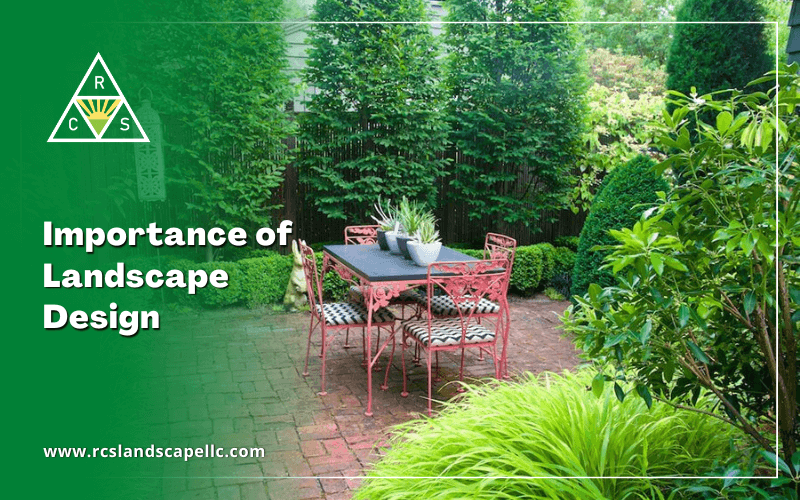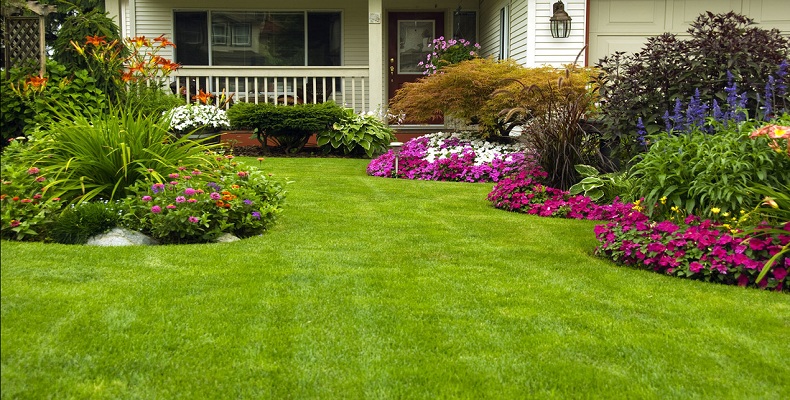The Buzz on Landscape Design
The Buzz on Landscape Design
Blog Article
Examine This Report about Landscape Design
Table of ContentsLandscape Design - TruthsLandscape Design Things To Know Before You Get ThisLandscape Design Things To Know Before You Buy9 Simple Techniques For Landscape Design
Official design theme. Credit Report: Gail Hansen, UF/IFAS The backyard is an expansion of the home where a range of tasks take place. A yard can usually be divided into three areas: public (the front lawn), personal (the back backyard), and service (generally the side backyard). The area of activity locations depends largely on the sort of location, the size of room required, the type of task, and the desired closeness to various other tasks and frameworks (Landscape Design).
The outdoors wall of the home typically acts as the first wall or beginning factor of an outdoor space. Inappropriate usages need to be separated, and relevant tasks, such as food preparation and eating, ought to be put with each other to make the yard more effective and enjoyable. When using hardscape to develop areas, make use of building and construction material similar to that made use of in the home for connection from the residence right into the garden.
Connected areas. Debt: Gail Hansen, UF/IFAS Making use of comparable hardscape functions and repeating plants draws the eye around the yard.
This gives a sense of secret that promotes expedition and discovery of the landscape. From a style viewpoint, plant materials have three significant functions in the landscape: aesthetic, structural and utilitarian. Visually, plants produce an aesthetically positive setting and structurally plants arrange and specify areas. Plants are practical due to the fact that they can change the atmosphere for the comfort of the user by modifying light, temperature level and humidity.
The Definitive Guide to Landscape Design
For mental comfort plants are used as physical or suggested barriers for privacy and safety. Physical barriers block both the sight and access to an area and include fences, walls and plant hedges. Landscape Design. Implied obstacles, normally low expanding plants, obstruct accessibility but not the sight (Number 9). Other features of plants consist of cleaning the air, protecting against erosion and dirt loss, preserving moisture in the soil, and returning raw material to the dirt.
Physical and suggested obstacles. Credit Scores: Gail Hansen, UF/IFAS For these reasons, the kinds of plants to be used (such as trees, bushes, or groundcovers) ought to be chosen in the early stages of preparation. Plant types are chosen for their practical capabilities so that their future objective and needed area can be taken into consideration at the very same time.
The overhanging aircraft, the upright aircraft and the ground plane must all be thought about to produce room. When the shape of a plant bed has been established, the plants must be massed (organized) and layered to accomplish aesthetic unity and the wanted find out quantity of unit. The dimension of a plant mass will certainly depend upon the total size of the lawn, the dimension of the individual plants in the mass, and the focus or impact wanted from the plant product.
Each plant mass is in front of, behind, or following to, an additional mass. Credit Score: Gail Hansen, UF/IFAS Duplicating plants within a mass and duplicating masses with comparable plants ties the garden together. The specific plant qualities have to be taken into consideration to effectively layer and mass plants.
Rumored Buzz on Landscape Design
All plant make-ups begin with the main framework plants, the large, mainly evergreen background plants-such as the trees and huge bushes. These plants separate or enframe areas, regulate the size of the room, and give the beginning point for choosing the proper features of the second layer, midground plants, for massing and infill.
Crucial factors in the garden must be highlighted by the use of special plants, unique frameworks, or yard ornaments. Marking limits or entryways to areas can be made this article with gateways, arbors, and steps, or via the usage of one-of-a-kind and vibrant plants. The form and/or design motif of the garden will typically assist identify the vital factors and exactly how they ought to be highlighted.
Other crucial areas in the backyard are focal factors, which is used to visually arrange a landscaped area. Various perspectives or viewpoints can expose various structures in the landscape that may call for a selection of focal factors.
7 Simple Techniques For Landscape Design
Figure 13. Plant types. Credit Score: Gail Hansen, UF/IFAS After type, structure is the following dominant feature of a plant; coarse, tool and fine appearances can be made use of for comparison and focus in the landscape. Type and appearance both trump shade in the garden for the majority of the year. During particular periods, color will certainly be the most visible feature of the yard.


The positive scent of plants, the audio of wind in the trees, the sound and appearance of description water, and the shades and textures of sculptures, pots and garden furniture all include to the experience of the garden. One information that is typically forgotten is the result of light on the looks of the plants.
The whole garden changes in function and appearance throughout the day, and the program of a year, as the light and temperature level adjustment from early morning to evening and period to period. Plant selection should take into consideration a plant's growth price, its fully grown size and form, and the maintenance it will call for.
It is necessary to recognize the eventual fully grown size of plants so they can be put in the right location and spaced correctly when they are set up. Offering plants space to expand is a challenge since the common fully grown dimension is generally based upon ideal growing conditions and the environmental problems of a website may create a plant to enlarge or remain smaller.
Report this page